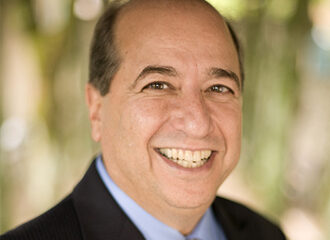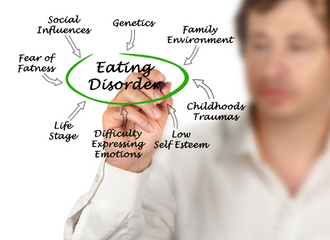Written by: Adrienne Ressler, LMSW, CEDS-S, F.iaedp, Vice President, Professional Development, The Renfrew Center Foundation & Susan Kleinman, MA, BC-DMT, NCC, CEDS-S, Creative Arts Therapy Supervisor and Dance/Movement Therapist, The Renfrew Center of Florida
 Dr. Seuss, in his iconic book Happy Birthday to You!, wrote: “Today you are you! That is truer than true! There is no one alive who is you-er than you!”
Dr. Seuss, in his iconic book Happy Birthday to You!, wrote: “Today you are you! That is truer than true! There is no one alive who is you-er than you!”
It may seem unusual to reference Dr. Seuss but, in this case, the doctor is right! You are unique. Accepting who you are—strengths and weaknesses, the good, the bad, and the in-between—can lead to a balance in life that allows growth and change to unfold naturally. When you hit “bumps in the road,” you may lose that balance and have trouble getting up or moving on.
Body Image & Emotionally-Driven Behaviors
One of the bumps we often encounter is in the arena of body image. Unfortunately, the pursuit of perfection has been the measuring tool by which we determine the worth of ourselves and our bodies; it is not a new concept.
What is new, and readily available, is access to technology designed to bring individuals together—at first glance a wonderful idea—but instead it serves as a showcase for how we look to ourselves through the harsh lens of self-criticism.
Most vulnerable to this scrutiny are those who suffer with body image issues, eating disorders and lack of self-compassion, all of which almost always lead to frustration and dissatisfaction, not happiness. The body needs appreciation and respect, not criticism.
Many individuals, when feeling overwhelmed, resort to what is called “emotionally-driven behaviors” (EDBs). These behaviors may provide an illusion of control, but they do not solve problems or provide solutions to conflicts—often leading to a full-fledged eating disorder.
EDB Example: Body Checking
One EDB often implemented by individuals to distract themselves from uncomfortable feelings is body checking. For example, in a session with her therapist, Sally (not her real name) appeared preoccupied. Her therapist noticed that instead of addressing what was bothering her, Sally was engaging in a series of movements–placing one hand around her opposite wrist as if to measure its size, touching her rib cage to feel her ribs.
She followed these actions by tightening and loosening her stomach muscles repeatedly. When the therapist asked what was happening, Sally responded that nothing was wrong. When asked about the body checking she had just engaged in, she acknowledged no awareness of what the therapist had observed.
The Importance of ‘Living in Your Body’
Living in our bodies and experiencing the feelings and sensations there that guide us through life is one of the three concepts of body image. Body image represents the perception of how individuals see themselves, how they believe others see them and how they feel living in their body.
The above example of body checking reflects Sally’s attempt to deal with the overwhelming feelings she was experiencing. Logically, we know that her body checking didn’t relate to what was really bothering her, but it did provide her with a distraction from those feelings.
With the therapist’s gentle direction, Sally was able to open a door to feeling safe enough to refocus on the conflict that needed to be addressed. She had transformed a difficult moment into an opportunity to examine what her body was telling her. Like Sally, as preoccupied as individuals with eating disorders are with their bodies, they are often not connected to the experience of living in their bodies.
So, what can be done about it?
What Can I Do? 4 Tips to Reconnect with Yourself & Your Body
Here are a few suggestions for getting back in touch with your own experience of living in your body.
-
- Get in rhythm with yourself: Go outside and watch the leaves move in the tree branches—or the clouds moving slowing in the sky—breathe fully and see if this experience helps you feel more grounded or anchored in the now.
- Be a detective: Instead of focusing on changing your body, focus on the mystery of what is bothering you. Make yourself comfortable and have a conversation with your body to find out where some of the feelings and experiences that challenge you are stored.
- Express what you discovered: Journal or draw about these experiences to see if you can identify what seems interesting or important to you.
- Determine what actions you need to understand further or to resolve what is bothering you: As Einstein, the famous scientist said, “Nothing happens unless something moves.” So, if nothing moves (changes), you could use some help to deal with your stresses. Don’t hesitate to seek professional assistance.
Conclusion
If you find yourself struggling with overwhelming issues that cause you to feel anxious, pick on yourself, blame yourself when others are at fault, and focus on your weight and appearance as a solution, you might consider a plan to help you examine your own feelings, behaviors and thoughts. Read the suggestions above and select a few to try out. Be sure to give yourself a trial of at least a few weeks to recognize what changes, however small, have been of help to you. Remember, there is no one alive who is you-er than you!


